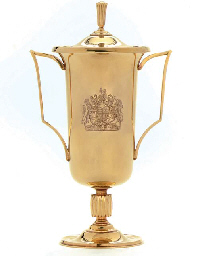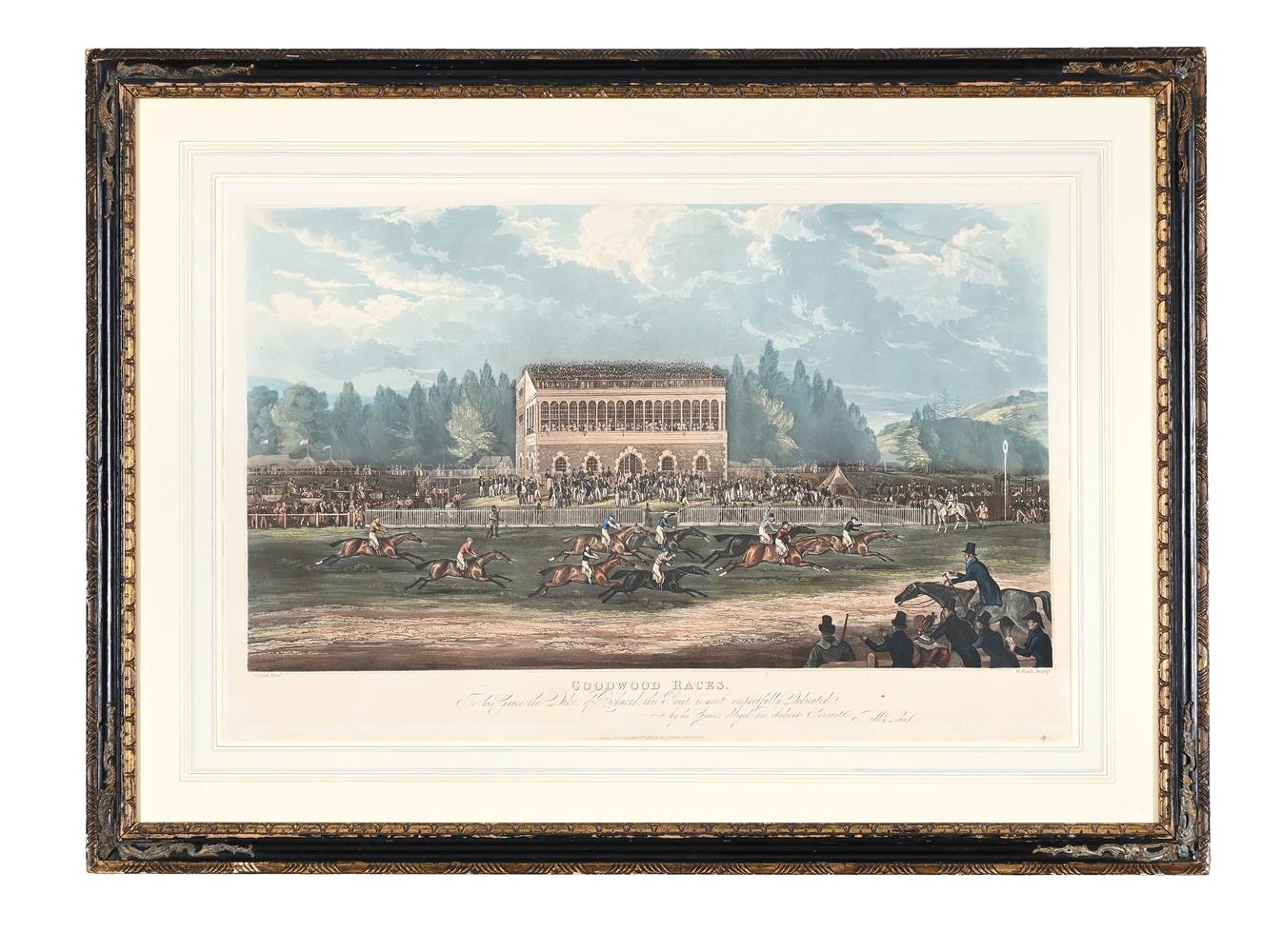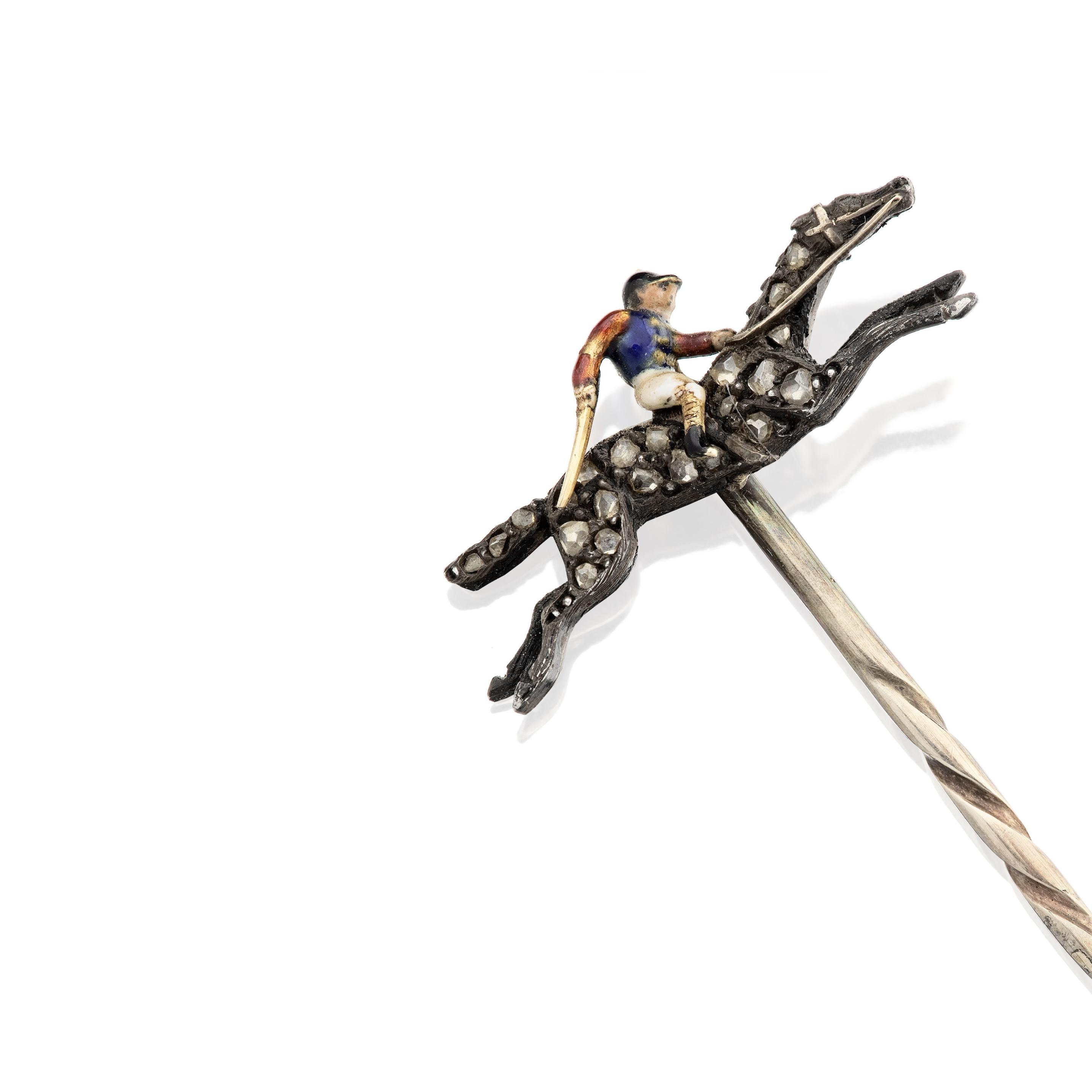THE 1926 ASCOT GOLD CUP: an 18 carat gold cup and coverSebastian Garrard, London 1926, inscribed under handle 'Chas. Sykes Sculpt' Of ovoid form, the whole hand-raised, a pull-off part domed cover featuring an organic style cast and chased six-pointed star wrythen finial, the main body with a rolled flaring upper rim transitioning into a gently waisted wide neck adjoining the main body, from the rounded shoulders two cast lug handles project horizontally, both ergonomically curved with fluting and ornamented in a kneeling ribbed character partly clothed by leaf forms, from which two slender arm-like strands return and attach to the main body, their ends curled within applied acanthus leaves, the smooth egg-shape form powerfully gripped at its base by four embossed spined acanthus leaves, a flanged pedestal beneath flowing into four embossed matching acanthus leaves in high and low relief, on a circular spreading foot, the patina of the gold to the whole warm and vibrant, presented on the original circular wooden plinth with applied lettering for 'ASCOT 1926' to one side, to the other a plaque inscribed 'Won by Sir John Rutherford's Solario', height cup without plinth 42cm, diameter handle to handle 34cm, weight 3041gms.FootnotesProvenance Awarded to Sir John Rutherford in 1926 and thence by family descent to the present owners. Lot Research The Ascot Gold Cup stands proudly as the showpiece event and trophy of Royal Ascot week, and is Britain's most prestigious horse racing occasion for 'stayers' – horses which specialise in racing over long distances. It is a Group 1 flat horse race, open to horses aged four years or older, covering a distance of 2½ miles. Ascot Racecourse itself is located in Berkshire, not far from Windsor Castle, and is located on Crown Estate Land. Founded by Queen Anne in 1711, it has a symbiotic relationship with the British Royal family, resulting in the reigning Monarch appointing a representative to run the administration of the racecourse on their behalf. Traditionally the racecourse had been run by the Master of the Royal Buckhounds, but in 1901 this changed and Lord Churchill (Victor Spencer, 1st Viscount Churchill, 1863-1934) was appointed by Edward VII as his first official Representative, becoming Chairman in 1913. In 1926, when this Gold Cup was awarded, Lord Churchill was still very much at the helm and was integral to the design of the trophy on offer. The Gold Cup was first run in 1807 when it was won by Master Jackey, and the first formal Royal procession, starting from Windsor Castle, was introduced in 1825 by George IV. Throughout Royal Ascot week, each race day begins with the Royal Procession, when the reigning Monarch and accompanying members of the Royal family arrive in horse-drawn carriages. While the Royal Standard is being raised, they are driven slowly along the track in full view of the expectant crowds. The Royals and invited guests then spend the day watching the races from the Royal Enclosure. The magnificent Ascot Gold Cup is the prize awarded to the owner of the winning horse by the reigning Monarch, and the cup design has to be approved by the Sovereign each year. It is one of only three perpetual trophies at the Royal meeting that are able to be kept on a permanent basis by the winners, the other two being the Royal Hunt Cup and the King's (or Queen's) Vase. As such, all three trophies are re-made every year, to a different design. Gold Cup Day is traditionally held on the third day of the Royal Ascot meeting held in June, which is known colloquially (but not officially) as 'Ladies' Day'; a day to see and be seen. The term seems to have been coined in 1823, when an anonymous poet described the Thursday of the Royal Meeting as "Ladies' Day ... when the women, like angels, look sweetly divine." A strict dress code underpins the spectacle, attracting the very best in fashion, horses, trainers and quality of racegoers alike. Lord Churchill is reputed to have taken personal c
THE 1926 ASCOT GOLD CUP: an 18 carat gold cup and coverSebastian Garrard, London 1926, inscribed under handle 'Chas. Sykes Sculpt' Of ovoid form, the whole hand-raised, a pull-off part domed cover featuring an organic style cast and chased six-pointed star wrythen finial, the main body with a rolled flaring upper rim transitioning into a gently waisted wide neck adjoining the main body, from the rounded shoulders two cast lug handles project horizontally, both ergonomically curved with fluting and ornamented in a kneeling ribbed character partly clothed by leaf forms, from which two slender arm-like strands return and attach to the main body, their ends curled within applied acanthus leaves, the smooth egg-shape form powerfully gripped at its base by four embossed spined acanthus leaves, a flanged pedestal beneath flowing into four embossed matching acanthus leaves in high and low relief, on a circular spreading foot, the patina of the gold to the whole warm and vibrant, presented on the original circular wooden plinth with applied lettering for 'ASCOT 1926' to one side, to the other a plaque inscribed 'Won by Sir John Rutherford's Solario', height cup without plinth 42cm, diameter handle to handle 34cm, weight 3041gms.FootnotesProvenance Awarded to Sir John Rutherford in 1926 and thence by family descent to the present owners. Lot Research The Ascot Gold Cup stands proudly as the showpiece event and trophy of Royal Ascot week, and is Britain's most prestigious horse racing occasion for 'stayers' – horses which specialise in racing over long distances. It is a Group 1 flat horse race, open to horses aged four years or older, covering a distance of 2½ miles. Ascot Racecourse itself is located in Berkshire, not far from Windsor Castle, and is located on Crown Estate Land. Founded by Queen Anne in 1711, it has a symbiotic relationship with the British Royal family, resulting in the reigning Monarch appointing a representative to run the administration of the racecourse on their behalf. Traditionally the racecourse had been run by the Master of the Royal Buckhounds, but in 1901 this changed and Lord Churchill (Victor Spencer, 1st Viscount Churchill, 1863-1934) was appointed by Edward VII as his first official Representative, becoming Chairman in 1913. In 1926, when this Gold Cup was awarded, Lord Churchill was still very much at the helm and was integral to the design of the trophy on offer. The Gold Cup was first run in 1807 when it was won by Master Jackey, and the first formal Royal procession, starting from Windsor Castle, was introduced in 1825 by George IV. Throughout Royal Ascot week, each race day begins with the Royal Procession, when the reigning Monarch and accompanying members of the Royal family arrive in horse-drawn carriages. While the Royal Standard is being raised, they are driven slowly along the track in full view of the expectant crowds. The Royals and invited guests then spend the day watching the races from the Royal Enclosure. The magnificent Ascot Gold Cup is the prize awarded to the owner of the winning horse by the reigning Monarch, and the cup design has to be approved by the Sovereign each year. It is one of only three perpetual trophies at the Royal meeting that are able to be kept on a permanent basis by the winners, the other two being the Royal Hunt Cup and the King's (or Queen's) Vase. As such, all three trophies are re-made every year, to a different design. Gold Cup Day is traditionally held on the third day of the Royal Ascot meeting held in June, which is known colloquially (but not officially) as 'Ladies' Day'; a day to see and be seen. The term seems to have been coined in 1823, when an anonymous poet described the Thursday of the Royal Meeting as "Ladies' Day ... when the women, like angels, look sweetly divine." A strict dress code underpins the spectacle, attracting the very best in fashion, horses, trainers and quality of racegoers alike. Lord Churchill is reputed to have taken personal c















Try LotSearch and its premium features for 7 days - without any costs!
Be notified automatically about new items in upcoming auctions.
Create an alert